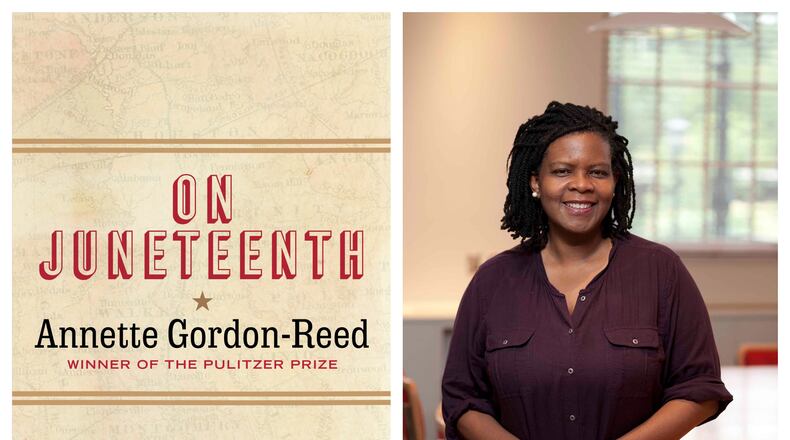The first friend I made when I moved from Florida to the Twin Cities in 1987 was a woman from Doucette, Texas.
Laverne, like me, was a Black woman who’d traded the South’s warmth and lushness for the cold, austere beauty of the Land of 10,000 Lakes. But we were often homesick and attended events that reminded us of home. For Laverne — a proud native daughter of East Texas — that was the annual Juneteenth festival in north Minneapolis. I had no idea what Juneteenth was before Laverne told me that it was a celebration to honor the day enslaved people in Texas found out they were free: June 19, 1865. From time to time she would actually say, “Don’t mess with Texas.”
I thought of our annual pilgrimage “over north” to the Twin Cities version of the festival while reading the slim volume of five essays, “On Juneteenth,” by Annette Gordon-Reed, the Pulitzer Prize-winning Harvard historian. Gordon-Reed is another proud daughter of East Texas, one whose scholarship on Thomas Jefferson and Sally Hemings helped prove that Jefferson fathered several children with Hemings while she was enslaved by him.
“On Juneteenth” is a blend of personal essays and historiography. It is not so much about Juneteenth as a holiday as it is about Texas’ origins as a slave state and the struggle for equality that Black Texans (and Americans) are still waging more than 150 years after General Order Number 3 officially ended slavery.
Gordon-Reed’s scholarship is about challenging established notions. And just as she did with the prevailing narrative around Jefferson — as a founding father who could never have fathered children with a Black woman — so she does with the state that gave the nation Juneteenth.
She argues that the prevailing images of “the rancher,” “the cowboy” and “the oilman” have popularized the idea the world over that “Texas is a white man,” riding through the dusty, windswept desert. Those clichés are also true in part, glorified in Hollywood movies like “The Alamo” and “Giant,” which Gordon-Reed saw as a child in her hometown of Conroe.
But Texas is also a place where, after gaining its independence from Mexico, slavery was written into its constitution. Stephen F. Austin, the so-called “Father of Texas,” was ultimately successful in his drive to turn hundreds of thousands of acres of land into wealthy cotton plantations. East Texas was built in great part by enslaved people living in the massive, fertile region of the state. Except for an enslaved character in “The Alamo,” which always made Gordon-Reed “slightly embarrassed” whenever he appeared on screen, Black people and their history were never part of the Lone Star State’s commercial legend.
“Divorced from plantation slavery, coming from a part of the state relatively devoid of Black people, the image of the cowboy on the range quiets the noise a bit and avoids the tragic element in Texas history — the element that Juneteenth supposedly closed the door on, even as it opened another tragic phase in the state and country’s history,” Gordon-Reed writes.
But Mexican, Tejano and Native American culture are foundational to the state. And while Gordon-Reed spends a chapter on Indigenous people’s culture, its erasure and Hollywood’s commodification of it, much of the book centers on Black people’s experiences, starting with the African “Estebanico,” who came to the Americas with the early Spanish explorers who enslaved him in the early 1500s. He literally found freedom in the land that would become Texas, emancipated almost 350 years before Juneteenth.
The image of the white cowboy being the true representative of Texas had rubbed off on me, too. That’s why Laverne’s deep pride in her home state was at first jarring. Texas belonged to them, not to us Black folk, I thought. But here was this woman from Doucette, a seventh-generation Texan, passionately claiming it.
Gordon-Reed’s book is a historian’s interrogation of her home state. But like Juneteenth, it speaks to the rest of the nation. As Gordon-Reed writes: “It is an American story, told from the most American place.”
Credit: New York Times
Credit: New York Times
NON-FICTION
“On Juneteenth”
by Annette Gordon-Reed
Liveright; 128 pages; $15.95
About the Author
The Latest
Featured




